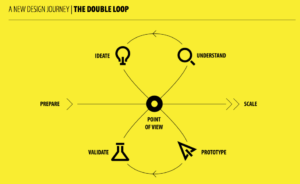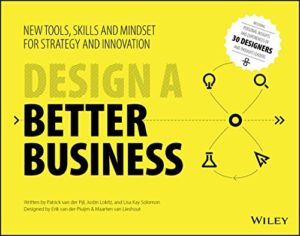Why Design Is Key to Unlocking the Genius Behind Innovation

Share
What is learning?
Tony Robbins asked this question in a talk he gave on strategies for learning quickly. His answer is quite interesting: “Whenever you learn something all you are really doing is creating a relationship between two things... a relationship between something that you know and something that is unknown.”
In many ways, this is the same process we apply to organizational innovation.

We take something we know—a market, product, consumer segment—and try to marry it to something unknown—like a new perspective on consumer needs or exploring an emerging technology that may impact your company’s business.
Over the past few years design has become a successful tool for igniting innovation in organizations, which is why I sat down to interview Lisa Kay Solomon, principal faculty at Singularity University and managing director of Transformational Practices, on her recently published book, Design a Better Business, co-authored by Patrick Van Der Pijl and Justin Lokitz.
The book uses worksheets, case studies, and clever hacks to help readers apply critical elements of the design journey to business innovation—for example, steps to take an idea from thought to execution. The book is visually stunning, but it’s practical too, with guided exercises for crafting vision statements and strong brand narratives.
A noteworthy tip in the book on how to be a great designer is to never act as a solo agent. It’s an interesting contrast to the Silicon Valley fixation on solo geniuses.
Solomon explains this concept:
“We love mythical heroes in Silicon Valley… It’s easy to talk about the genius of these great entrepreneurs who are coming up with ideas that disrupt industries. And if you unpack that a little bit and say ‘How did that initial hunch of an idea come to be?’ It took a tribe, and it took a team.”
Here’s an excerpt from Design a Better Business to give you a taste of the book.
Be Part of the Future
Sign up to receive top stories about groundbreaking technologies and visionary thinkers from SingularityHub.


Uncertainty: Your Secret Weapon
“The world has changed. Not only are consumer habits, technologies, and other trends uprooting once-thriving businesses, entire markets are shifting and emerging out of the uncertainty and unpredictable nature of today’s network economy. Interestingly (and infuriatingly to some), many of the companies leading the charge — and the change — did not exist two decades ago. It’s not that these new players are just lucky or employ smarter, more capable people. So, how is it that they’ve found gold in some of the most unlikely places? In a word: design.

A new design journey shown in the book called, The Double Loop.
Design is fundamentally about enhancing the way you look at the world. It’s a learnable, repeatable, disciplined process that anyone can use to create unique and qualified value. Design is not about throwing away the processes and tools you have. In fact, quite the opposite is true. Just as design has enabled countless upstarts to create new business models and markets, design will also help you decide when to use what tools in order to learn something new, persuade others to take a different course, and at the end of the day, make better (business) decisions.
Most of all, design is about creating the conditions by which businesses thrive, grow, and evolve in the face of uncertainty and change. As such, better businesses are ones that approach problems in a new, systematic way, focusing more on doing rather than on planning and prediction. Better businesses marry design and strategy to harness opportunity in order to drive growth and change in a world that is uncertain and unpredictable.”
Source: Text excerpt from Design a Better Business
Image credit: Shutterstock and Design a Better Business
We are a participant in the Amazon Services LLC Associates Program, an affiliate advertising program designed to provide a means for us to earn fees by linking to Amazon.com and affiliated sites.
Alison tells the stories of purpose-driven leaders and is fascinated by various intersections of technology and society. When not keeping a finger on the pulse of all things Singularity University, you'll likely find Alison in the woods sipping coffee and reading philosophy (new book recommendations are welcome).
Related Articles

How Scientists Are Growing Computers From Human Brain Cells—and Why They Want to Keep Doing It

Scientists Say We Need a Circular Space Economy to Avoid Trashing Orbit

Scientists Race to Deliver Custom Gene Therapies for Incurable Diseases in Weeks—Not Years
What we’re reading
